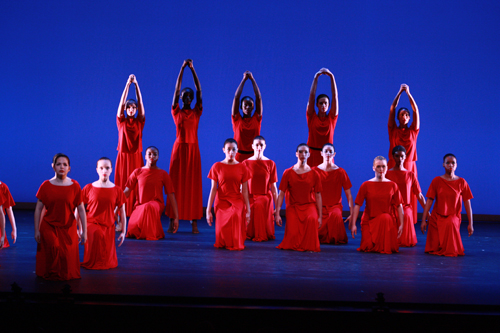
How important is dance to life? کس طرح اہم زندگی کو آکسیجن ہے?
امریکی ثقافت آج میں, مارتھا گراہم کی میراث ہماری زندگی میں رقص کی اہمیت کی ایک مسلسل یاد دہانی کے طور پر کام کرتا. گراہم, جو میں انتقال کر گئے 1991, remains the most honored and celebrated figure in American dance, one of its most important dancers, and the mother of modern dance. کیمرون Basden, Director of Dance, Interlochen Center for the Arts, کی وضاحت کرتا ہے: “In finding the next Martha Grahams of the world, a mixture of tools are a necessity. Good dance training – a solid foundation enhanced with various styles and techniques; and the ability to explore and create through composition, choreography and collaborative work. Most important of all is having something to express or say through movement, which requires a safe environment for expression while having clear parameters. With that being said, artists need to be encouraged to think outside the box.”
An innovator, a dancer, ایک معلم, an artist, a visionary, Martha Graham revolutionized not only the world of dance but of music, costuming, stage designing, make-up and lighting. It is mind boggling to watch students perform works such as “Heretic”, “گلی میں قدم”, “Dark Meadow Suite”, “ایکشن کا پیش خیمہ”, “Panorama”, اور “Diversion of Angels” and consider that these ground breaking works which may appear to some (who don’t know Graham well) as 21st century world premieres while they are actually classic masterpieces originally created by their master in some cases over 80 سال پہلے. “The Graham technique benefits the mind, body, and spirit of the dancer,” explains Mary Harney, Artist-in-Residence at Skidmore College. “Graham’s influence can be seen in the work and philosophies of many of today’s top choreographers, Ohad Naharin and Robert Battle among them. Will there be a next Martha Graham? شاید?”
Throughout North and South America, یورپ, افریقہ, Asia and the Middle East, Graham’s work has received international acclaim. چونکہ 2003, the Martha Graham Dance Company has partnered with schools and universities all over the world to showcase Graham’s dances. “In my fourteen year experience of teaching children the Graham technique, I have discovered that they love Martha’s stories, خیالات, and concepts behind the movement studies which they use imaginatively to produce the movement. The result is a freer thinking individual — self-motivated and more self-reliant with sharper critical thinking skills and self- نظم و ضبط,” comments Peter London, Professor at The New World School of Miami-Dade and Artistic Director, پیٹر لندن گلوبل رقص تھیٹر.
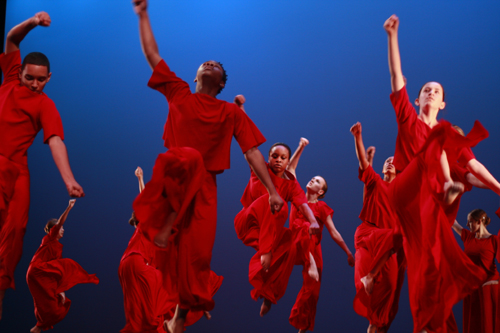
This Wednesday, مارچ 14, at the Joyce Theater in New York City, 100 students from Interlochen Arts Academy (مشی گن), Point Park University (پنسلوانیا), University of Arizona (Arizona), Skidmore College (نیو یارک), The New World School of the Arts (فلوریڈا۔), The Hartt School of the University Of Hartford (Connecticut), and the Graham II School, will take the stage to educate, amaze, inspire, and remind us that we need more Martha Grahams. I had the opportunity to chat further with the Artistic Director of the Martha Graham Dance Company, جینٹ Eilber:
What do we want children to gain from an arts education – what are the values that are there?
We want children to understand the value of self-expression and through that expression, the value of self. We want to give them an opportunity to deeply connect with what they have to say by giving them alternative ways to say it. We want them to understand success and accomplishment in a way that may not be available to them in the more traditional academic approach. We want children to have a better informed perspective of themselves within a greater understanding of the world. Graham’s art, her themes and her innovations reverberate with the idea of self-empowerment. The essence of Martha’s revolution is that she took the gestures of body language — the most primal form of self-expression — and theatricalized them. Even the youngest child can connect to the idea, but these personal discoveries seem to be particularly revelatory with our university age dancers.
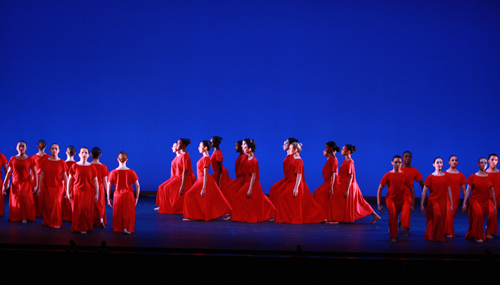
What is the Graham’s company vision for ongoing dance education in educational institutions in the next 5 کرنے کے لئے 10 سال?
We feel that the field of modern dance is poised to expand its approach to education and audience access. The field was born out of, and driven by, revolt – rejecting the past in order to forge the future. But now we are about one hundred years old, and we have to recognize that we have a body of classics – masterpieces of American art – and an important past which we must honor and build upon. We need an approach to American Dance that celebrates both the past and the future, that uses its legacy of innovation as a launch pad to inspire new work and the creativity of future artists.
How do you assess students participating in this event?
There are many ways to assess the journey – and by that I mean the artistic process of these students coming to the Joyce Theater on March 14. There are the more easily measured things like whether they came to rehearsal on time, whether they arrived warmed-up and invested themselves fully in the work, whether they applied corrections they received from one rehearsal to the next. Then there are the more difficult assessments – whether they were able to find their own connections to the emotional themes of the work, to create a personal interpretation, to invest the movement with meaning, to reveal something about themselves. If by studying and performing a Graham masterwork, these students have learned something about themselves, have given more of themselves emotionally as well as physically than they may have thought possible, that’s a lesson that will stay with them and inform their lives whether or not they go on to become professional dancers.
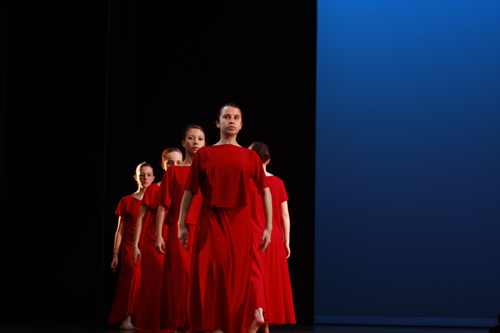
What elements do we need in our arts education system to inspire more innovators like Martha Graham?
The essential elements are technique and imagination. We need both the discipline of technique and the openness and confidence to use it in remarkable new ways. رقص کی تعلیم صرف جسمانی چالوں کا ایک نظام سیکھنے کے بارے میں نہیں ہو سکتا. اس سوچ کی مشق کرنے کے لئے طریقوں میں شامل کرنے کے لئے ہے, improvising کی, خطرہ لینے, آپ کی کلپنا کا استعمال کرتے ہوئے, and leaving yourself open to ideas or paths that may seem wildly unrelated to your goals. I worked on a project called “The Brain and The Arts.” Some scientists had studied the process of scientific or medical innovation, یعنی. the exact moment that great ideas were born. They discovered ground-breaking ideas often came about after scientists had been in conversations with others they rarely worked with – from very different areas of science. Somehow the cross-pollination had triggered new connections that pushed their thinking forward. I remember working with Graham when she was beginning a new dance. She would never start with movement. She would start with ideas – from poetry, from the visual arts, from philosophy. She was inspiring herself, gearing herself up with diverse and rangy thinking, spurring her own imagination. If we can teach students how to do that, we have a chance at nurturing the next generations of Martha Grahams.
مزید معلومات کے لئے: http://marthagraham.org/
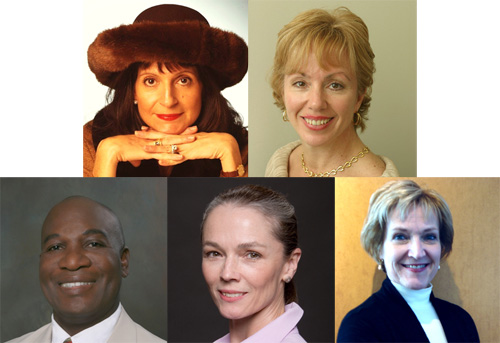
Photos courtesy of Kerville Cosmos Jack, مارتھا گراہم ڈانس کمپنی, and Samantha Glatstein.
تعلیم کے لئے عالمی تلاش میں, سر مائیکل باربر سمیت میرے ساتھ اور عالمی سطح پر معروف فکری رہنماؤں (برطانیہ), ڈاکٹر. مائیکل بلاک (امریکہ), ڈاکٹر. لیون Botstein (امریکہ), ڈاکٹر. لنڈا ڈارلنگ-ہیمنڈ (امریکہ), ڈاکٹر. مادھو چوہان (بھارت), پروفیسر مائیکل Fullan (کینیڈا), پروفیسر ہاورڈ گارڈنر (امریکہ), پروفیسر کریں Yvonne ہلمین (نیدرلینڈ), پروفیسر کرسٹن Helstad (ناروے), جین Hendrickson نے (امریکہ), پروفیسر گلاب Hipkins (نیوزی لینڈ), پروفیسر Cornelia Hoogland (کینیڈا), مسز. چینٹل کوفمین (بیلجیم), ڈاکٹر. Eija Kauppinen (فن لینڈ), پروفیسر ڈومینک Lafontaine (بیلجیم), پروفیسر ہیو Lauder (برطانیہ), پروفیسر بین لیون (کینیڈا), پروفیسر بیری McGaw (آسٹریلیا), شیو ندار (بھارت), پروفیسر R. نٹراجن (بھارت), ڈاکٹر. ڈینس پوپ (امریکہ), شریدر رازگوپالن (بھارت), ڈاکٹر. ڈیانے Ravitch (امریکہ), سر کین رابنسن (برطانیہ), پروفیسر Pasi Sahlberg (فن لینڈ), Andreas کی Schleicher (پیسا, او ای سی ڈی), ڈاکٹر. انتھونی Seldon نے (برطانیہ), ڈاکٹر. ڈیوڈ Shaffer کے (امریکہ), ڈاکٹر. کرسٹن عمیق کر رہے ہیں (ناروے), چانسلر اسٹیفن Spahn (امریکہ), ایوز Theze (اسکول Français کی امریکی), پروفیسر چارلس Ungerleider (کینیڈا), پروفیسر ٹونی ویگنر (امریکہ), سر ڈیوڈ واٹسن (برطانیہ), پروفیسر Dylan کے Wiliam (برطانیہ), ڈاکٹر. مارک Wormald (برطانیہ), پروفیسر تیو Wubbels (نیدرلینڈ), پروفیسر مائیکل نوجوان (برطانیہ), اور پروفیسر Minxuan جانگ (چین) وہ تمام اقوام کو آج سامنا ہے کہ بڑی تصویر تعلیم سوالات دریافت کے طور پر. تعلیم کمیونٹی پیج کے لئے گلوبل تلاش
C. M. روبن وہ ایک موصول ہوئی ہے جس کے لئے دو بڑے پیمانے پر پڑھا سیریز کے مصنف ہے 2011 میں Upton سنکلیئر ایوارڈ, “تعلیم کے لئے گلوبل تلاش” اور “کس طرح پڑھیں گے?” انہوں نے تین bestselling کتابوں کے مصنف ہیں, سمیت Wonderland میں یلس اصلی.
C پر عمل کریں. M. ٹویٹر پر روبن: www.twitter.com/@cmrubinworld


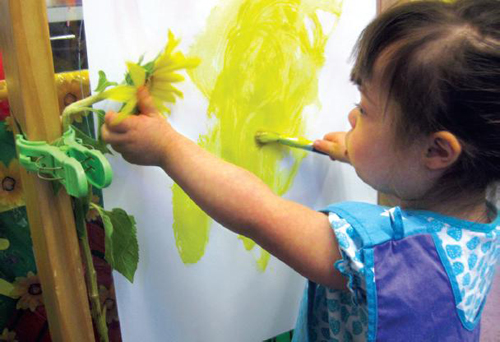
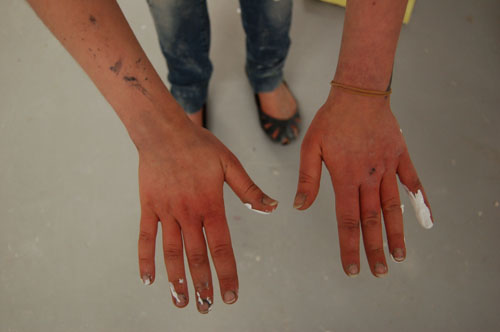
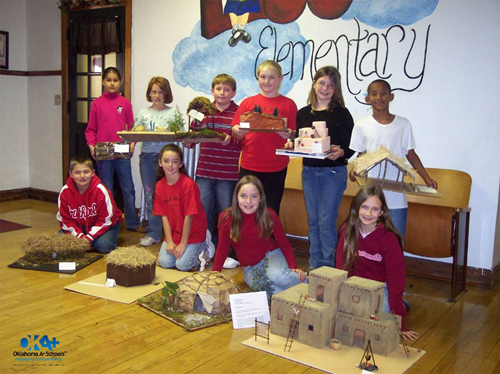

حالیہ تبصرے